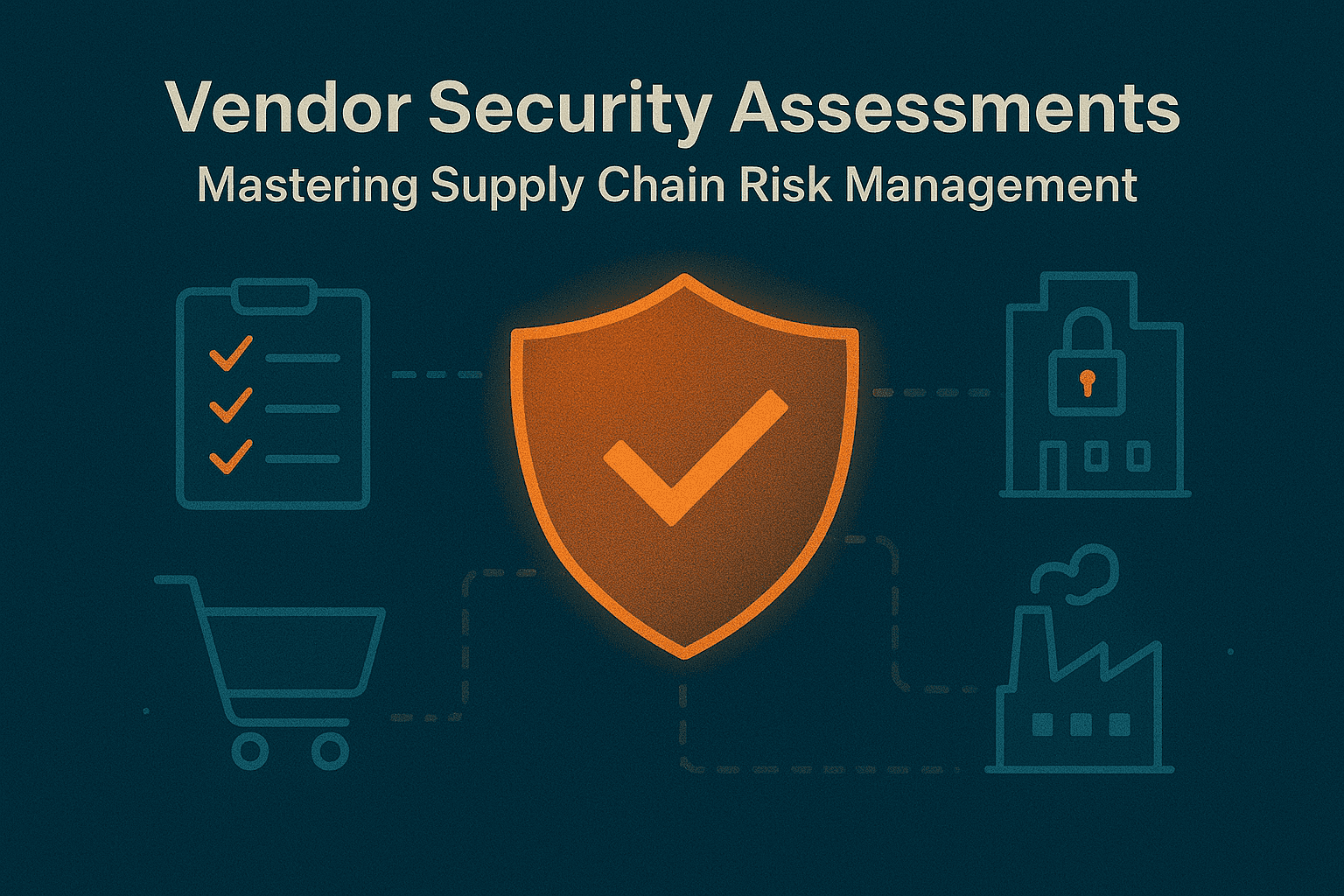In today’s interconnected digital landscape, every organization relies on a vast ecosystem of third-party vendors, from cloud hosting providers to specialized B2B software solutions. This dependency, while necessary for business efficiency, creates a significant risk: a weakness in a single vendor’s security posture can lead to a compromise of the entire client organization. Vendor Security Assessments are the formal, systematic processes used to evaluate and manage these third-party risks, serving as the operational core of Supply Chain Risk Management (SCRM).
1. Defining Supply Chain Risk Management (SCRM)
SCRM is the practice of identifying, analyzing, and mitigating risks associated with the extended enterprise—anyone outside your direct control who has access to your systems or data. Because software itself is often the primary access point, effective SCRM is critical for safeguarding information.
The Vendor Risk Lifecycle
Managing vendor security is not a one-time event; it’s a continuous lifecycle:
- Onboarding (Due Diligence): Initial assessment before contracting.
- Contracting: Embedding security requirements (e.g., specific clauses for breach notification, liability, and required certifications).
- Monitoring: Continuous, periodic checks of the vendor’s controls.
- Offboarding: Ensuring all client data and access permissions are revoked when the relationship ends.
2. The Vendor Security Assessment Process
A thorough vendor security assessment focuses on two main areas: technical controls and governance maturity.
A. Questionnaires and Documentation Review
The first step involves gathering documented evidence of the vendor’s security program. This is typically done through standardized questionnaires, which are a direct way to gauge the vendor’s adherence to industry best practices.
- Standardized Questionnaires: Frameworks like the Shared Assessments SIG (Standardized Information Gathering) questionnaire allow clients to ask hundreds of structured questions covering everything from data encryption to physical security.
- Reviewing Certifications: Clients prioritize vendors who have invested in formal security governance. Receiving a Type 2 report for SOC 2 or certification for ISO 27001—standards that confirm controls are effective over time—is often a mandatory requirement for large enterprise contracts.
- Policy Review: Clients examine key security policies, including the Incident Response Plan (IRP), to confirm that the vendor has a tested process for handling a breach.
B. Technical Evidence and Continuous Monitoring
While documentation is important, technical evidence proves that the controls are actually working.
- Penetration Test Results: Clients review recent, independent penetration test reports to understand any exploitable weaknesses in the vendor’s system.
- Vulnerability Scanning: To perform a security vulnerability assessment, many clients now use third-party security ratings platforms (like SecurityScorecard or Bitsight) to continuously monitor the vendor’s external-facing security posture, including patch management, email security, and observed malware infections.
- Cloud Access Control: For vendors providing cloud services, the assessment includes reviewing how they manage authentication and authorization, often focusing on the principles of least privilege and the implementation of Multi-Factor Authentication for their administrative and client-facing interfaces.
3. Integrating SCRM with Internal Security
Effective SCRM must be aligned with the client’s internal security strategy, particularly with the Identify function of their security framework. By performing a thorough Risk Assessment of the vendor, the client can categorize the vendor’s risk and apply appropriate scrutiny.
| Vendor Risk Category | Example Vendor Type | Assessment Scrutiny |
| High Risk | Cloud providers handling PII, financial data, or core IP. | Annual SOC 2 Type 2 report required, on-site audits, and continuous monitoring. |
| Medium Risk | Marketing or HR software with limited non-sensitive access. | Annual questionnaire and policy review. |
| Low Risk | Vendors with no access to internal systems or sensitive client data (e.g., website font provider). | Minimal assessment; contractual indemnity clauses sufficient. |
When a vendor is deemed high-risk, the client must ensure that the vendor’s failure will not compromise the client’s entire security model. This drives architectural decisions like Micro-segmentation on the client’s side, which ensures a compromised vendor cannot move laterally into sensitive internal networks.
4. Contractual and Compliance Requirements
The final step in mastering SCRM is formalizing the security expectations within the contract.
- Data Protection Agreements (DPAs): Mandatory for vendors handling personal data, especially those subject to regulations like GDPR or CCPA. DPAs legally define the vendor’s role as a “data processor” and enforce specific security measures.
- Right to Audit: Including a clause that grants the client the right to perform their own audit or request a third-party audit ensures compliance with the agreed-upon controls.
- Service Level Agreements (SLAs) for Security: Contracts should mandate specific recovery objectives (e.g., Time-to-Recover (TTR)) following a security incident, ensuring the vendor’s failure won’t halt the client’s business continuity.
By making vendor security assessments a formalized and continuous practice, organizations transform a potential weakness in the supply chain into a controlled, manageable business risk.

